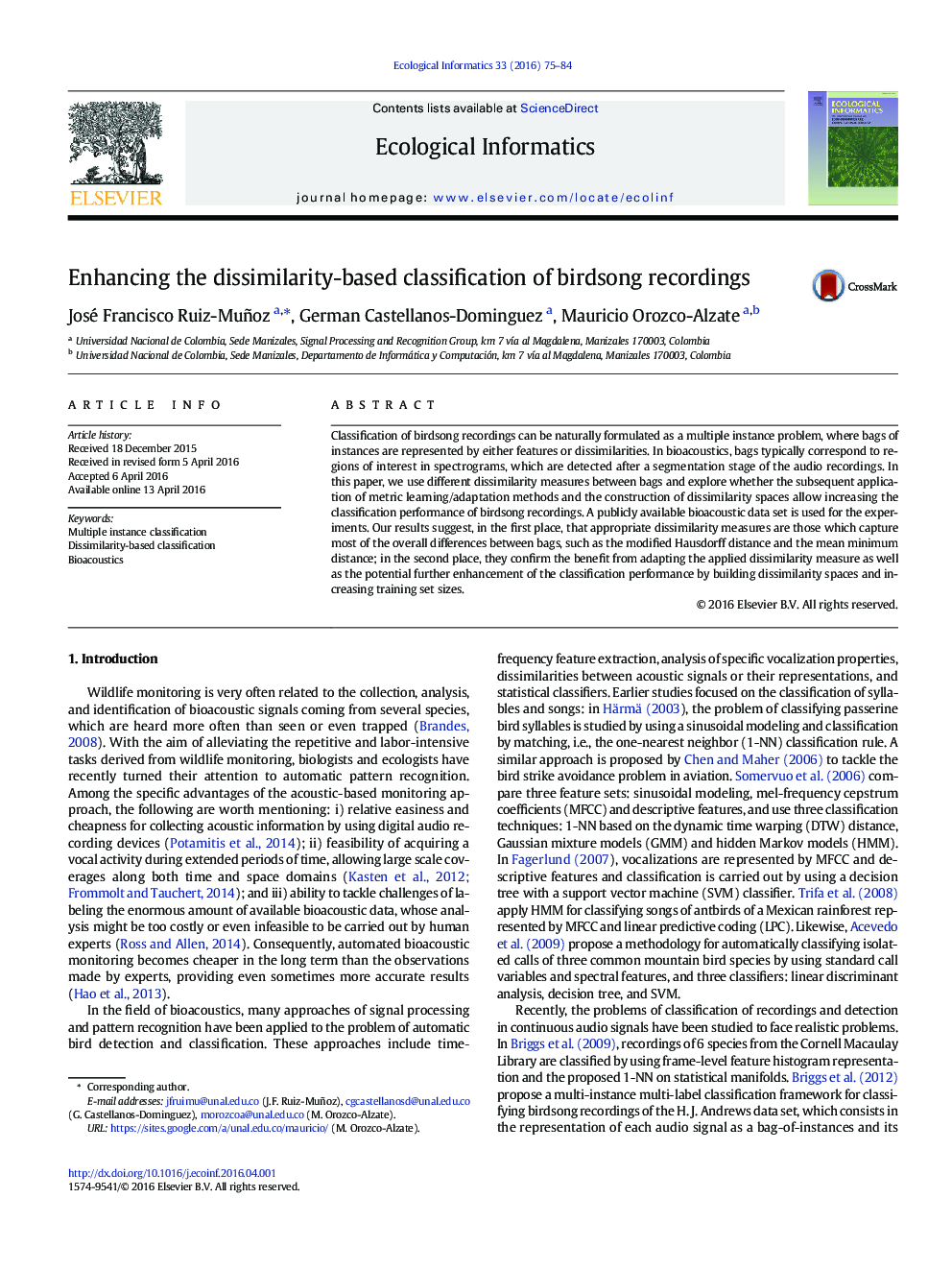| کد مقاله | کد نشریه | سال انتشار | مقاله انگلیسی | نسخه تمام متن |
|---|---|---|---|---|
| 4374784 | 1617201 | 2016 | 10 صفحه PDF | دانلود رایگان |
• Birdsong recordings can be classified by different dissimilarity-based strategies.
• Modified Hausdorff and mean–minimum are appropriate distances to compare birdsongs.
• When adapting distances, a good and simple metric learning technique is preferred.
• Metric learning followed by a dissimilarity space enhances birdsong recognition.
• Metric learning and dissimilarity spaces effectively exploit the training set.
Classification of birdsong recordings can be naturally formulated as a multiple instance problem, where bags of instances are represented by either features or dissimilarities. In bioacoustics, bags typically correspond to regions of interest in spectrograms, which are detected after a segmentation stage of the audio recordings. In this paper, we use different dissimilarity measures between bags and explore whether the subsequent application of metric learning/adaptation methods and the construction of dissimilarity spaces allow increasing the classification performance of birdsong recordings. A publicly available bioacoustic data set is used for the experiments. Our results suggest, in the first place, that appropriate dissimilarity measures are those which capture most of the overall differences between bags, such as the modified Hausdorff distance and the mean minimum distance; in the second place, they confirm the benefit from adapting the applied dissimilarity measure as well as the potential further enhancement of the classification performance by building dissimilarity spaces and increasing training set sizes.
Journal: Ecological Informatics - Volume 33, May 2016, Pages 75–84
